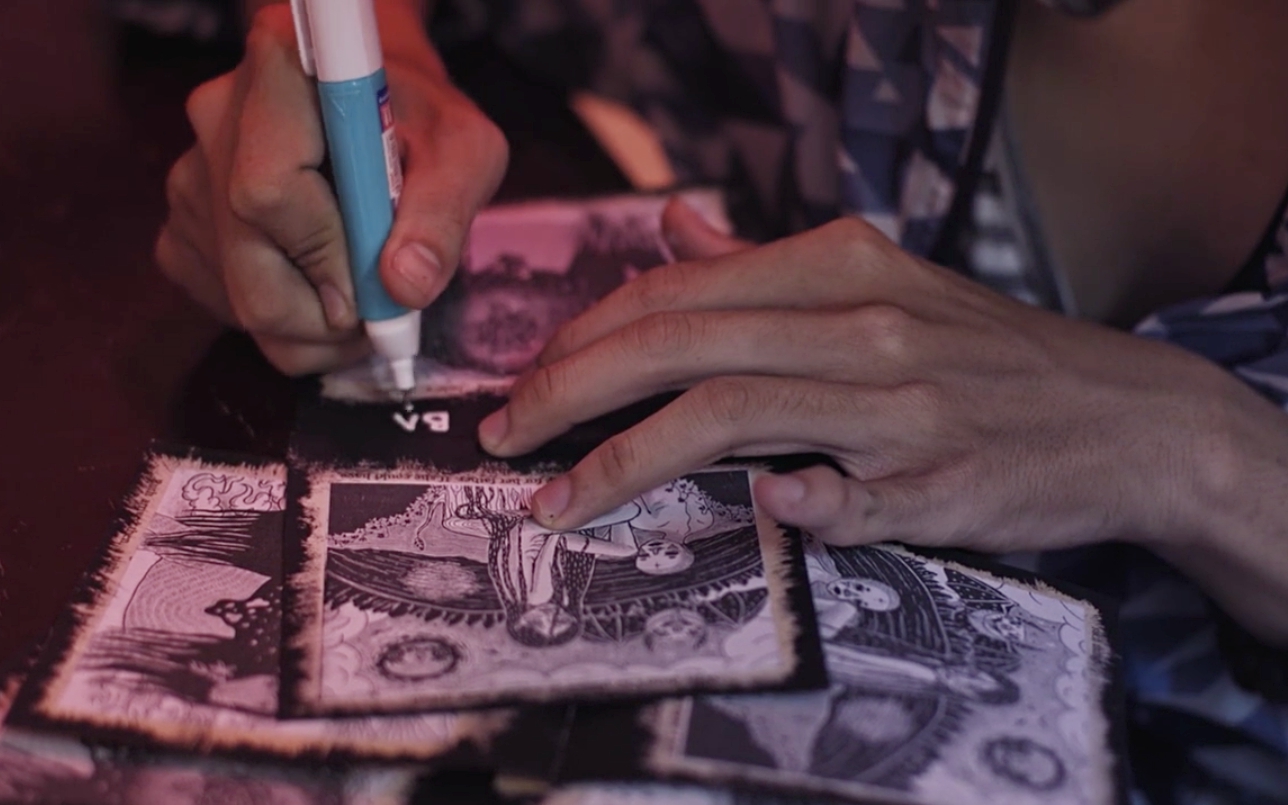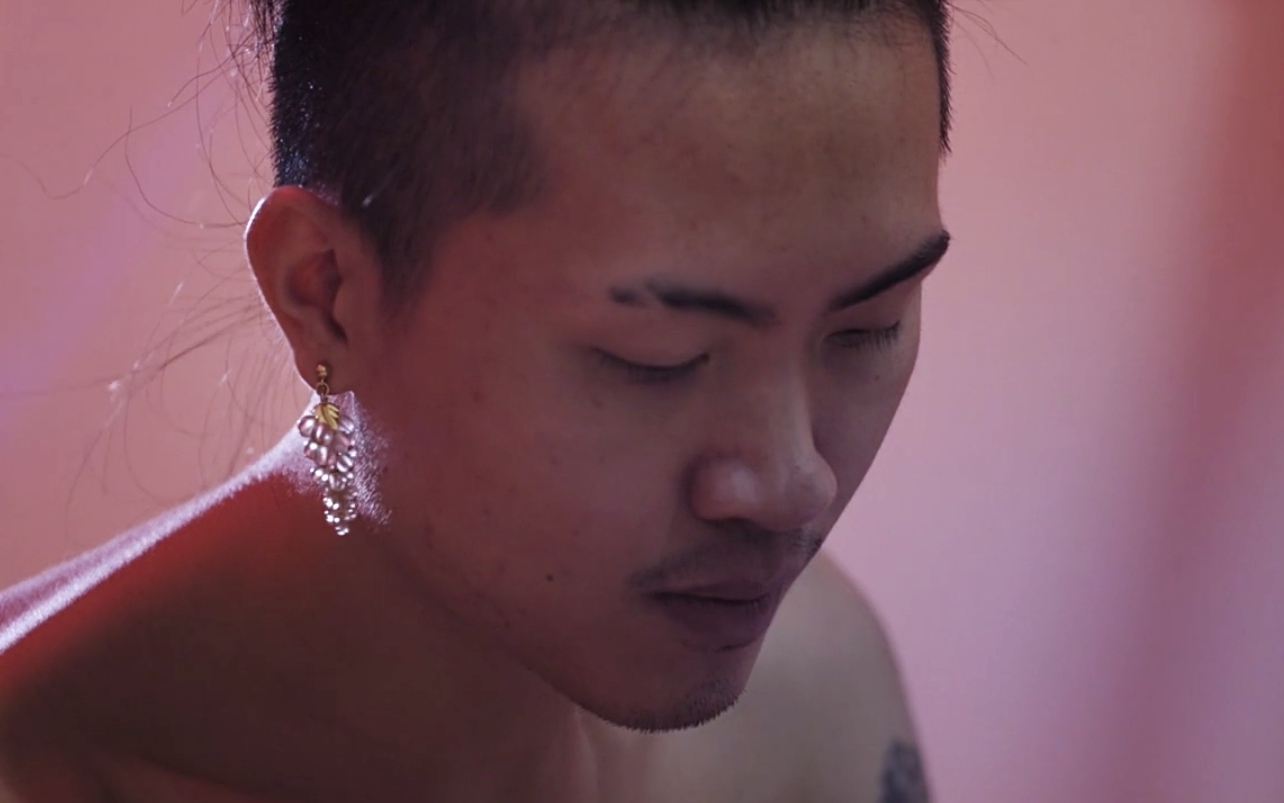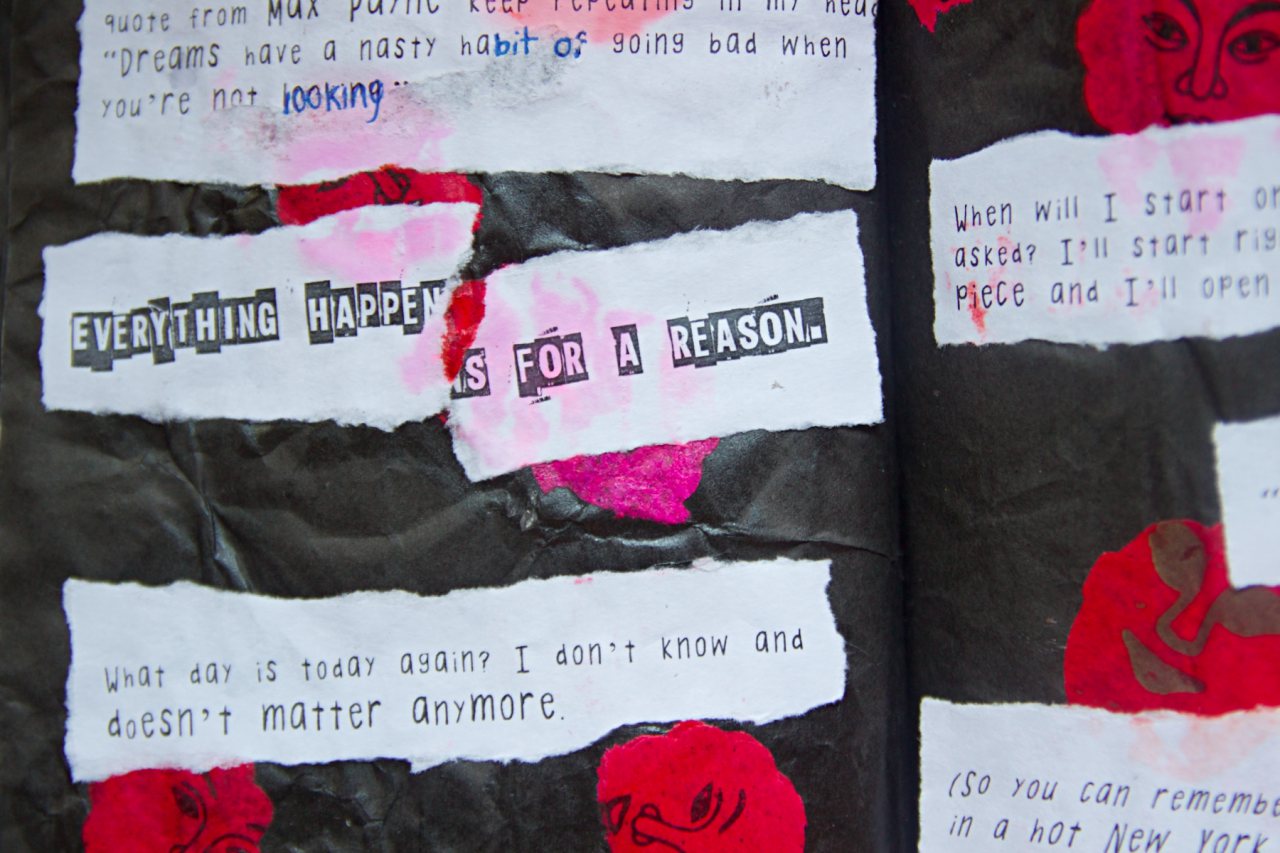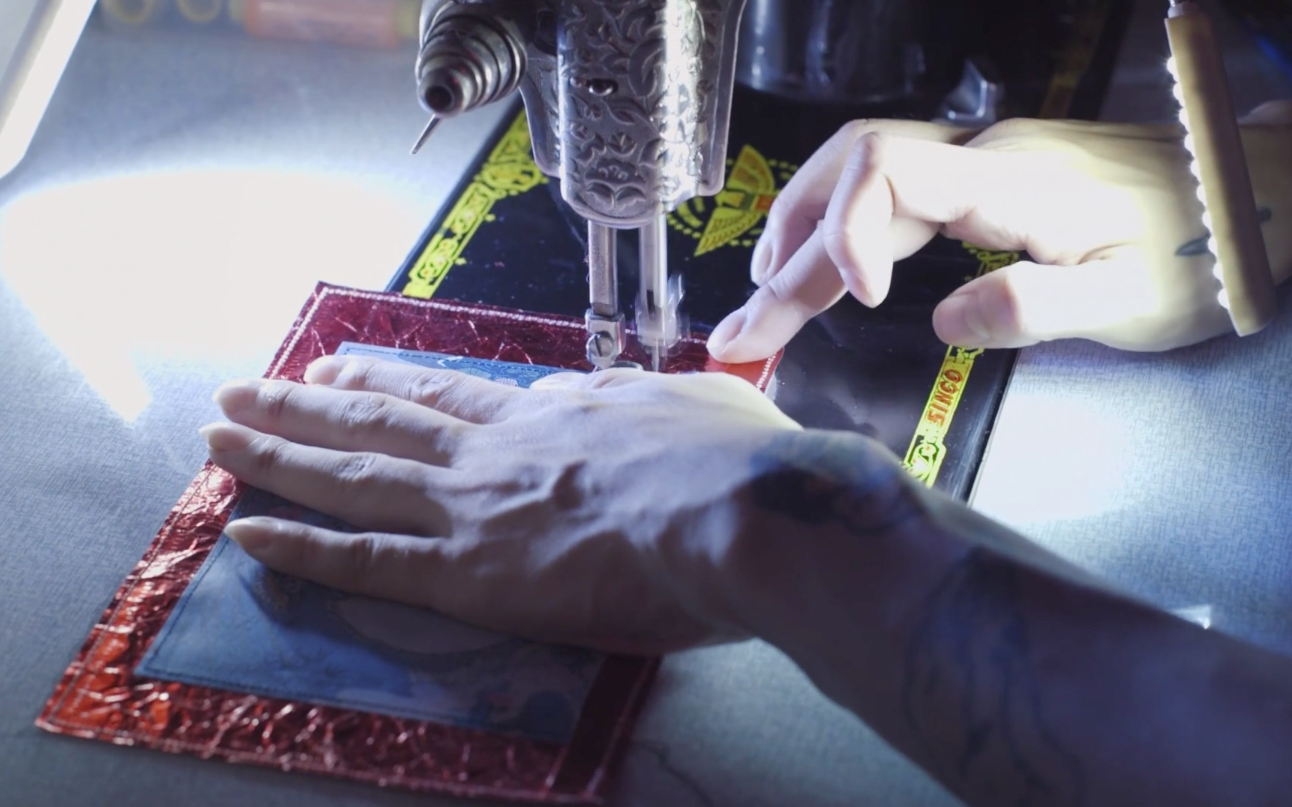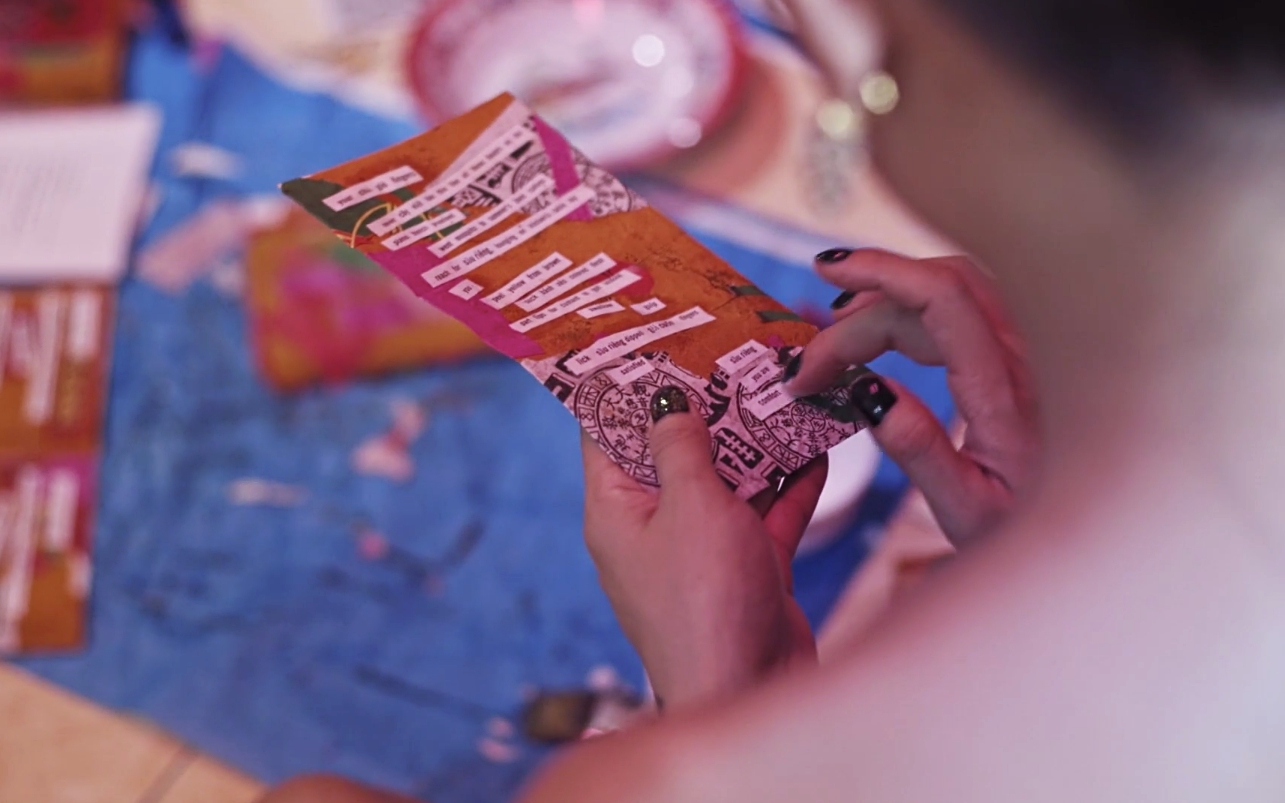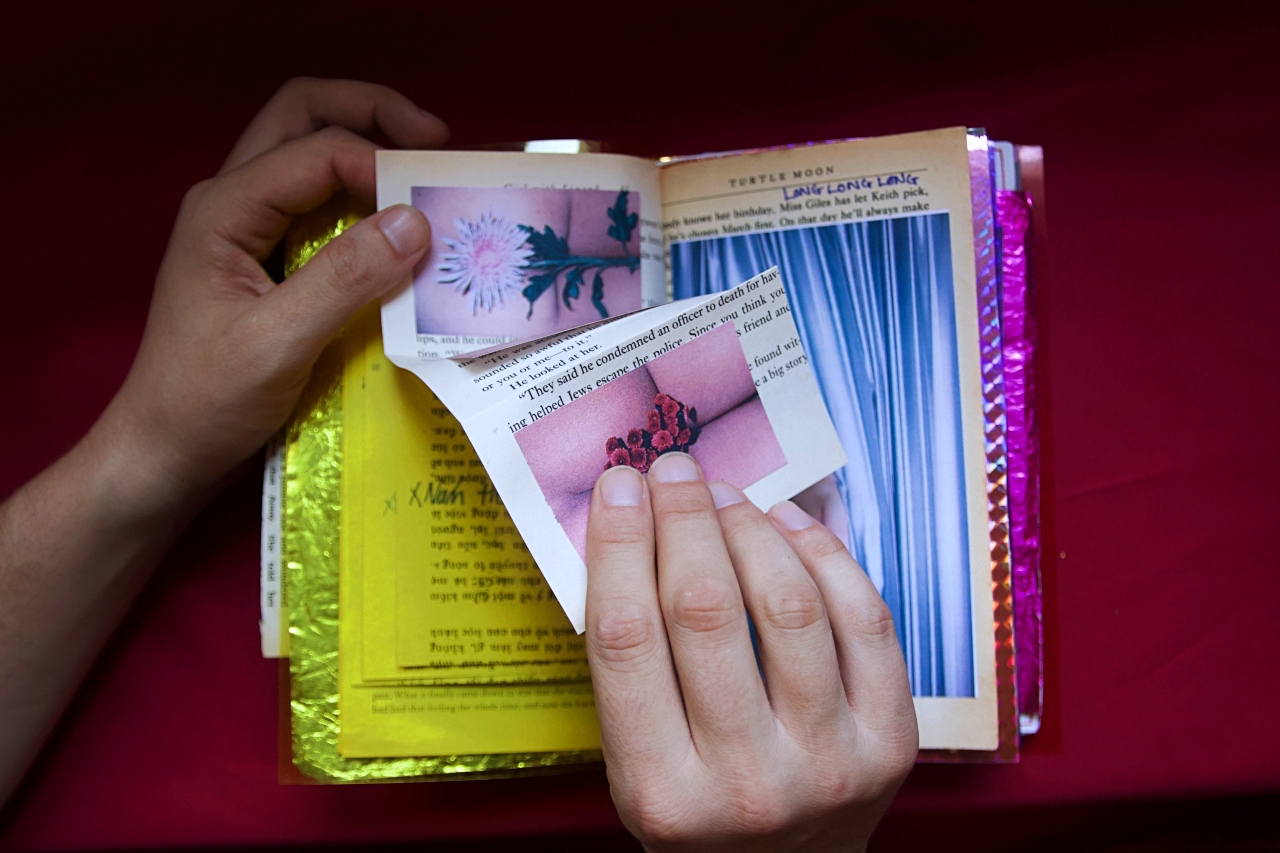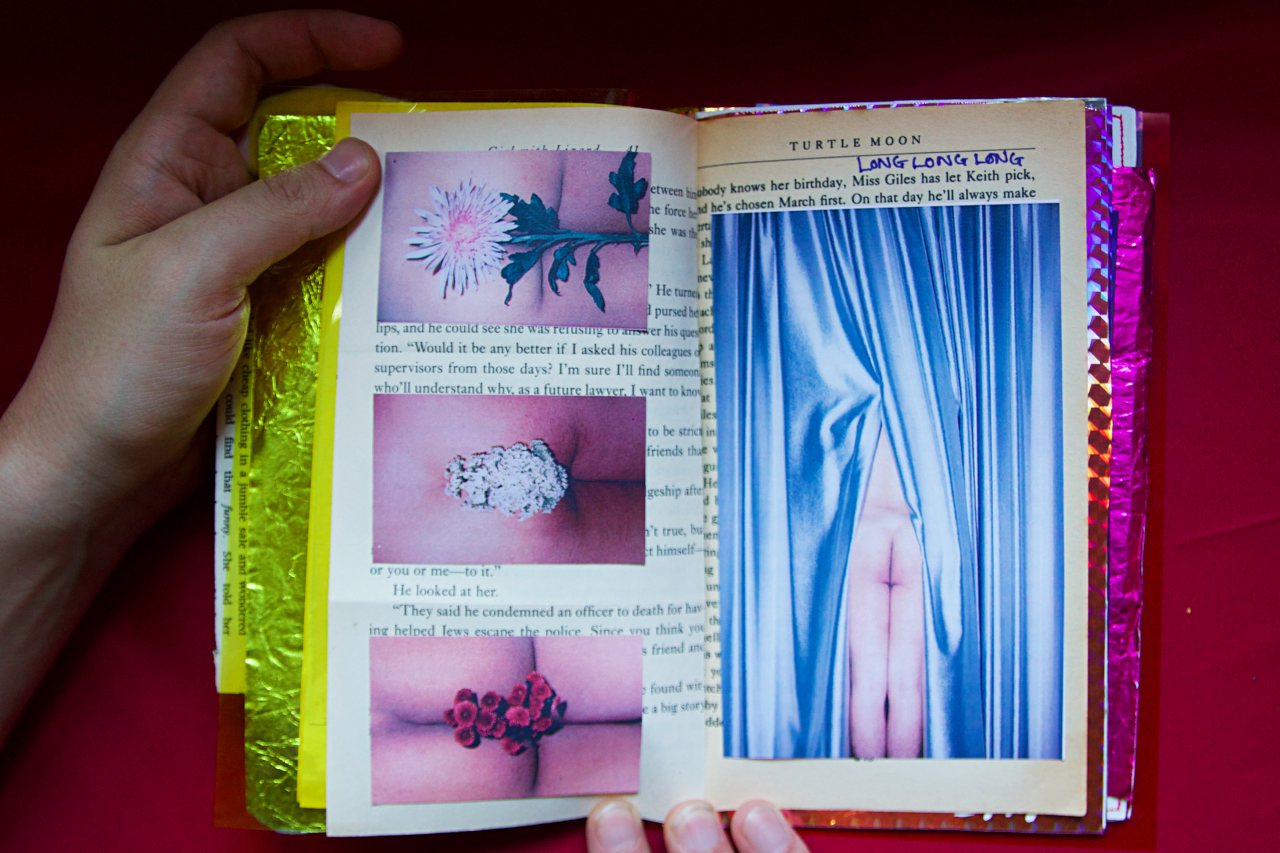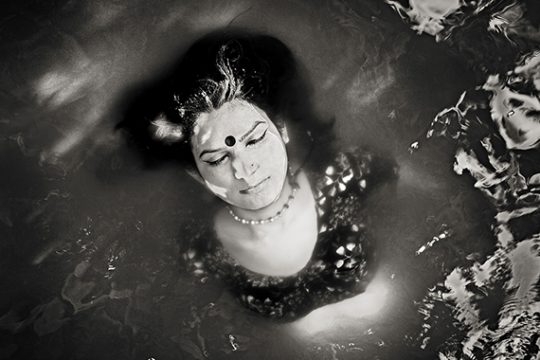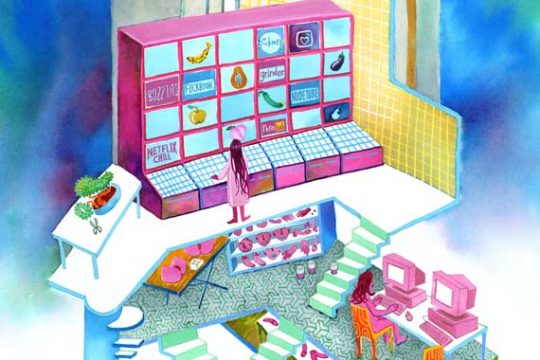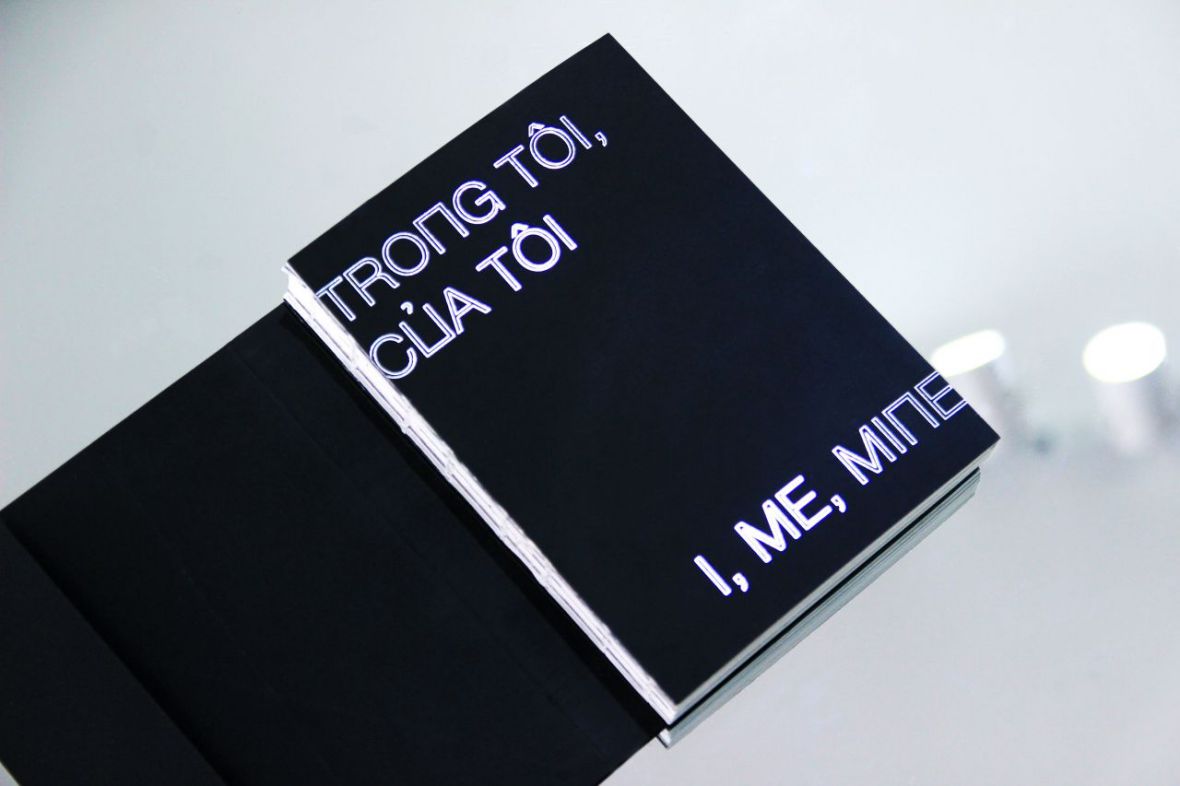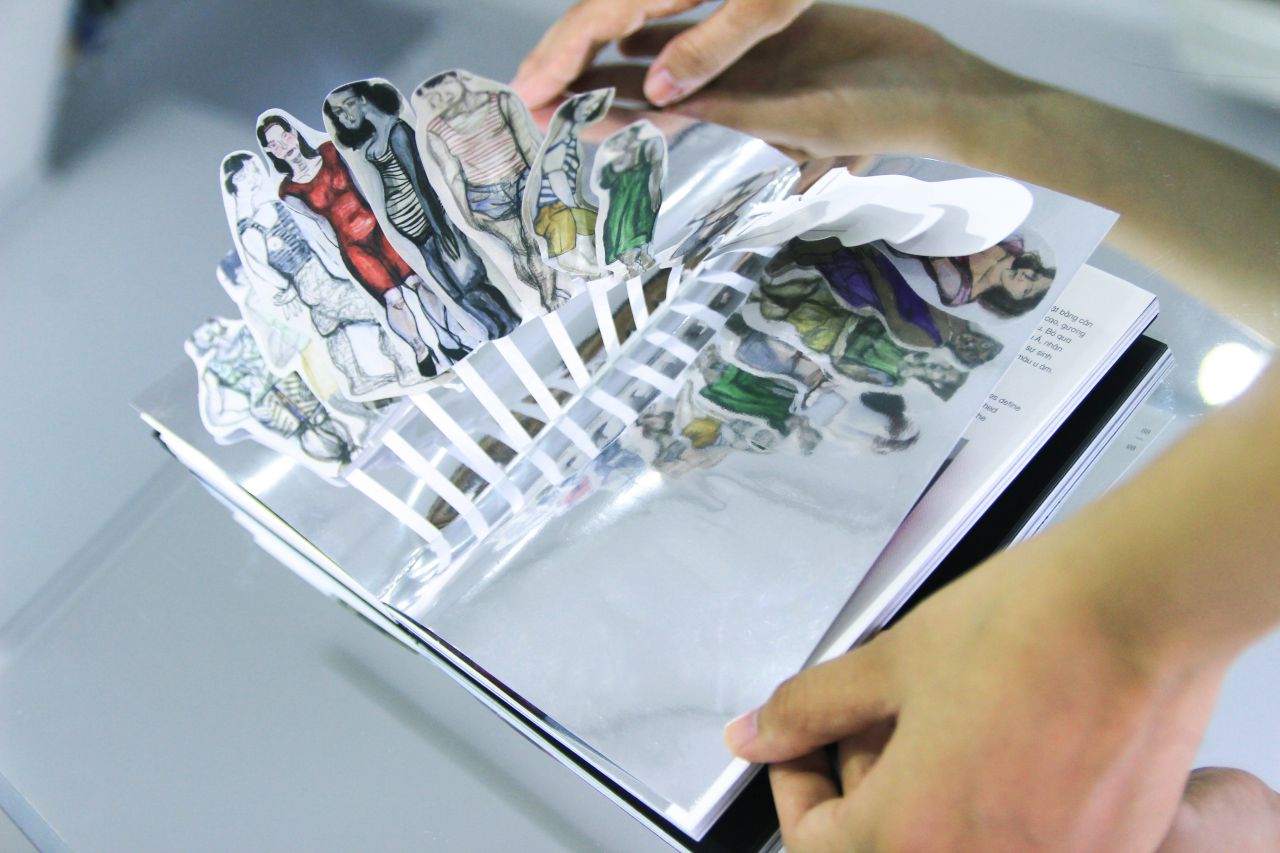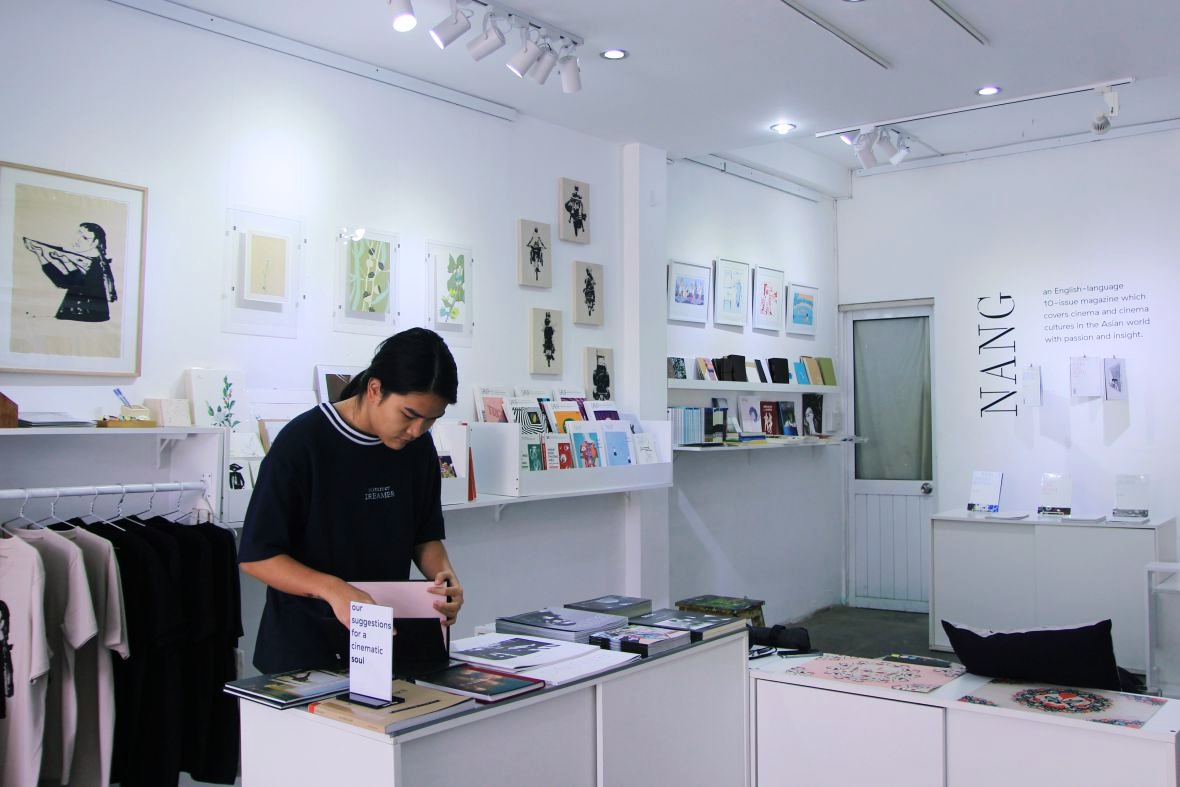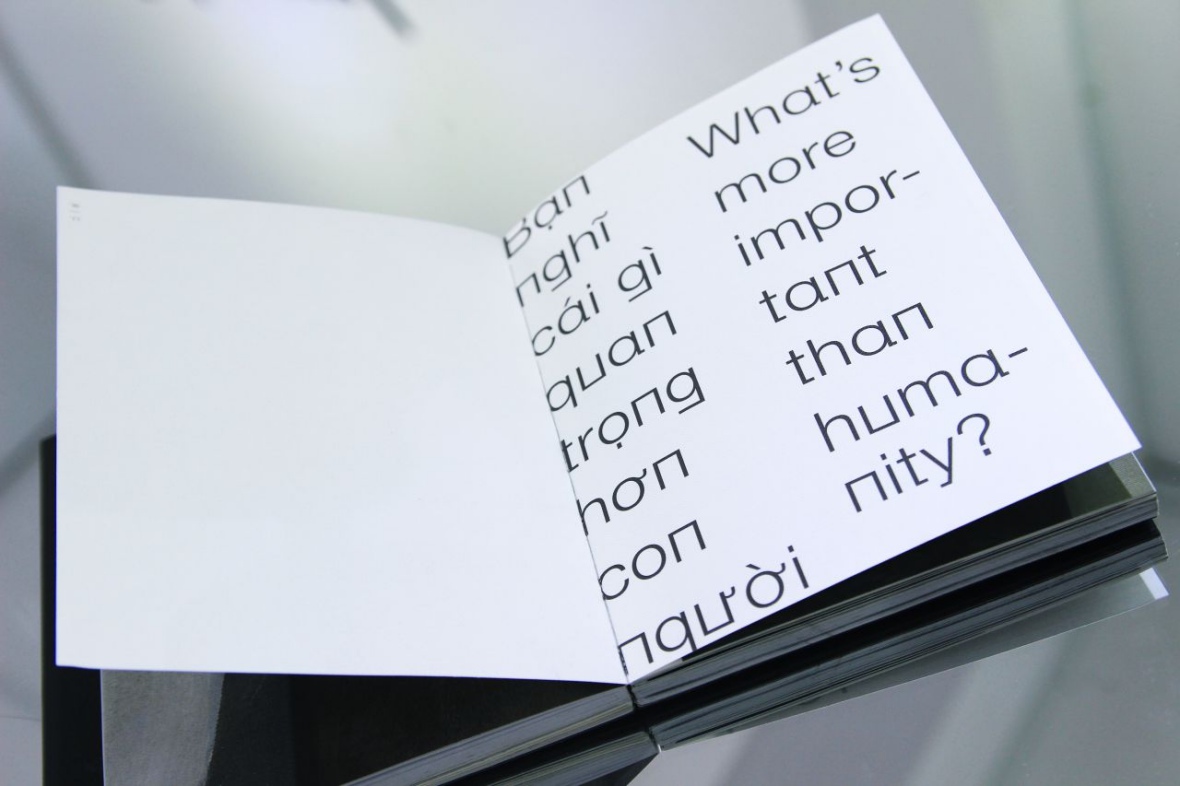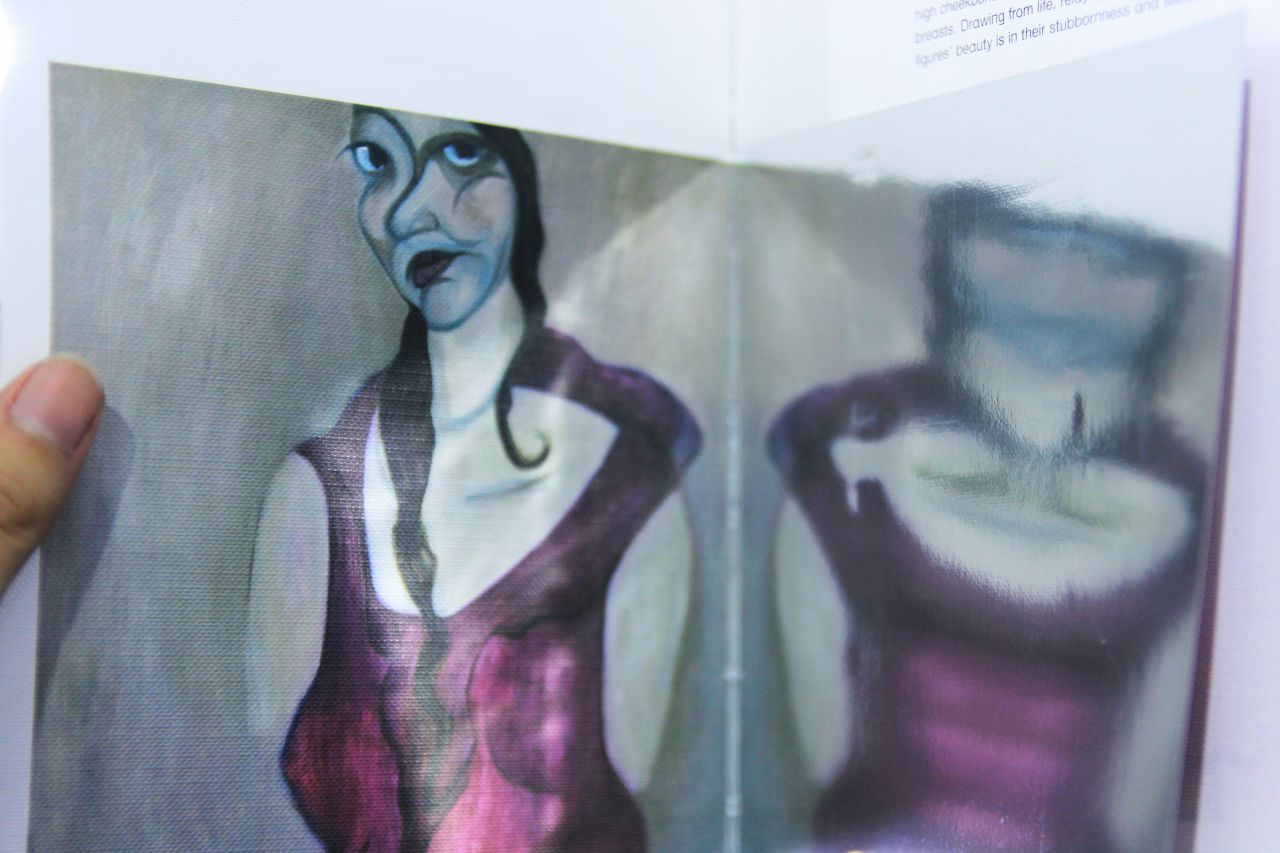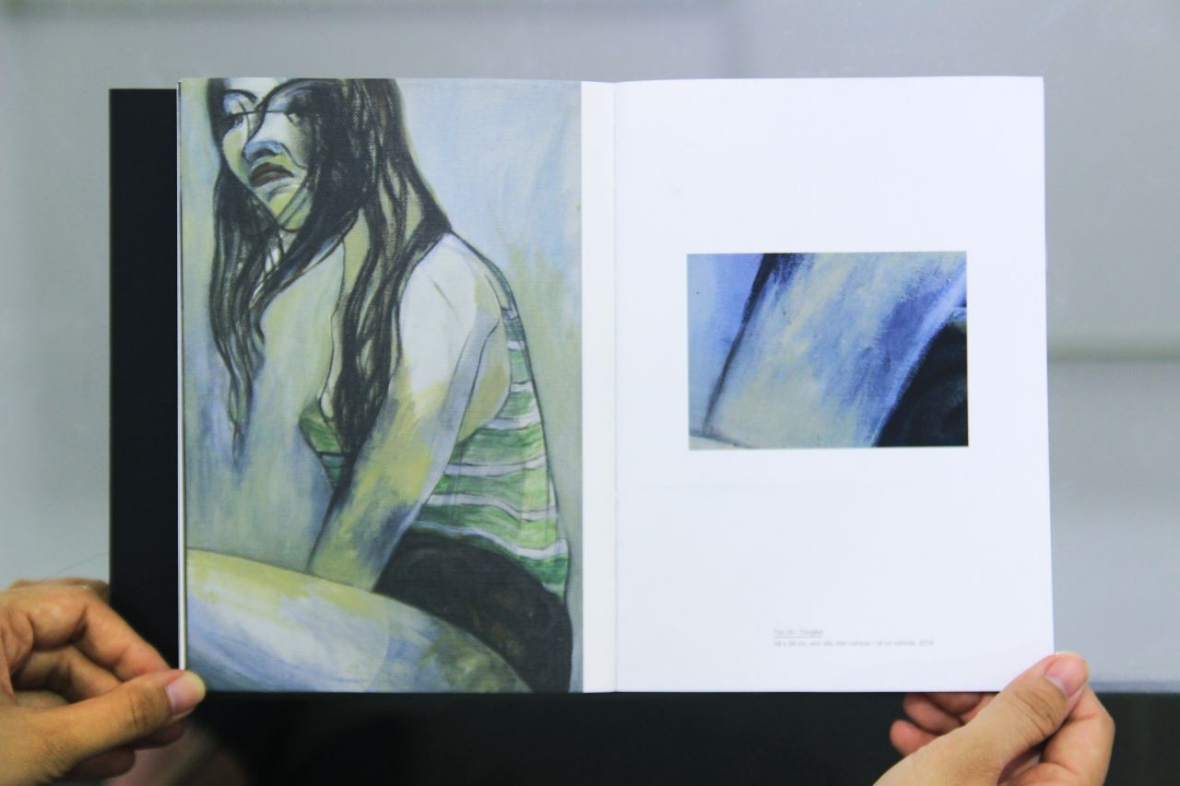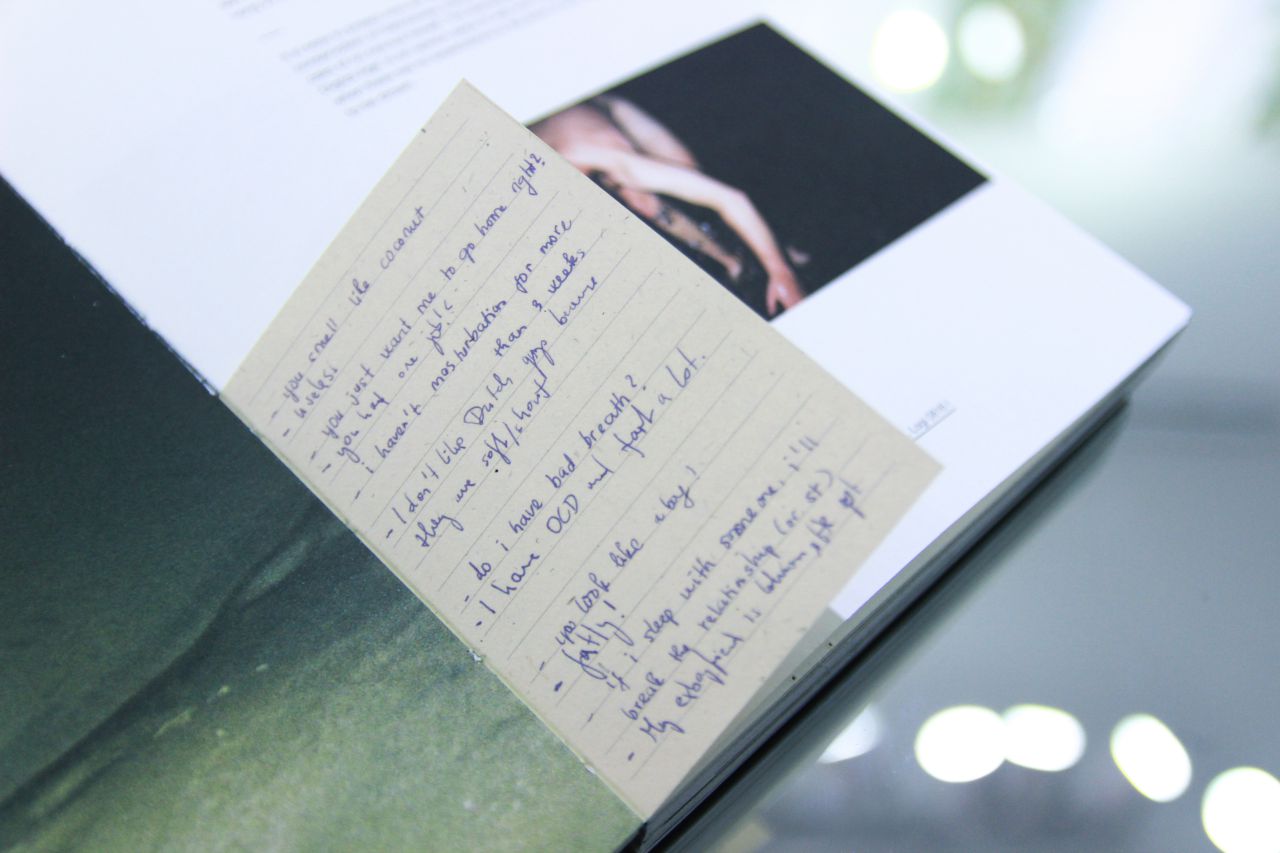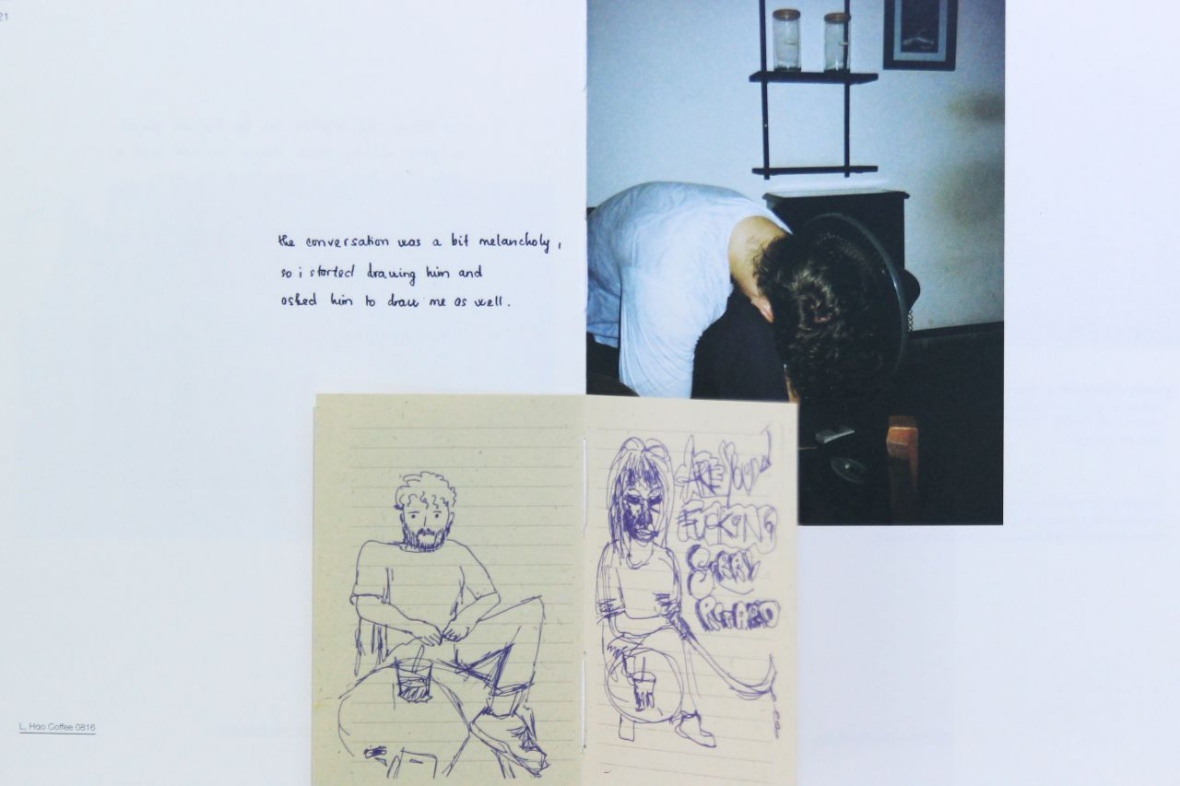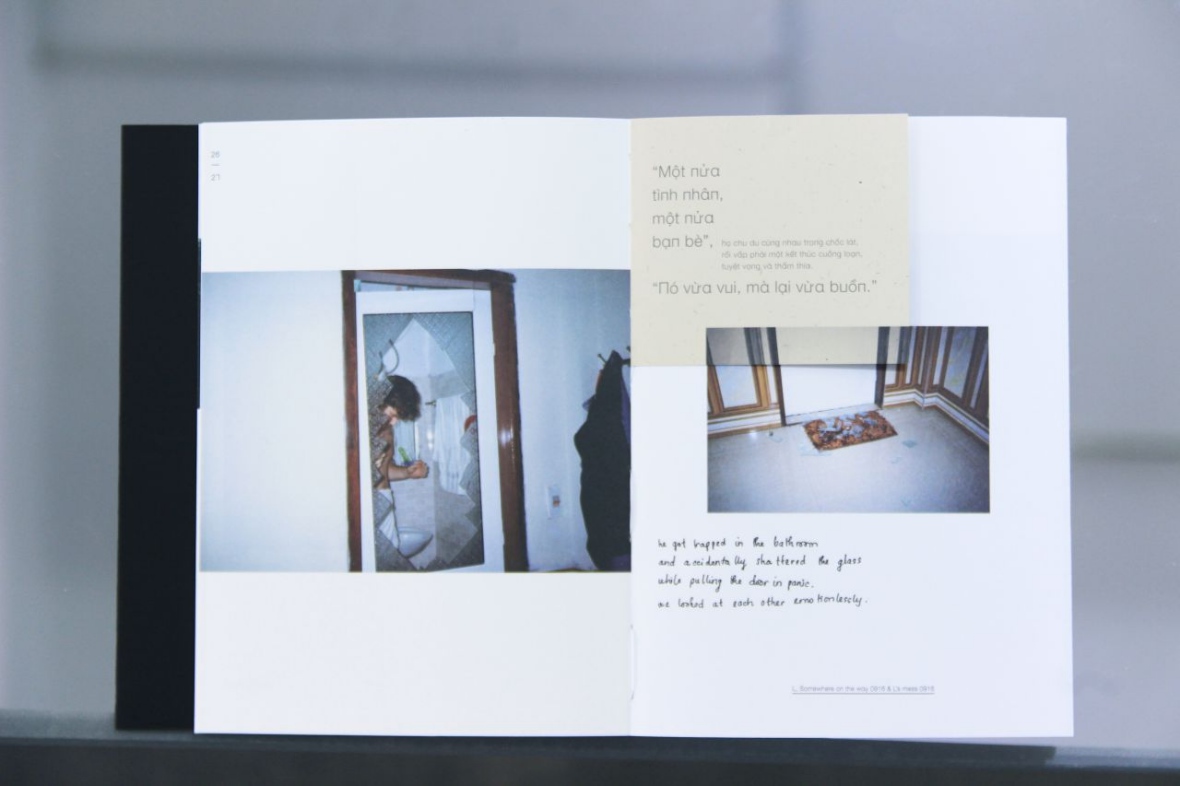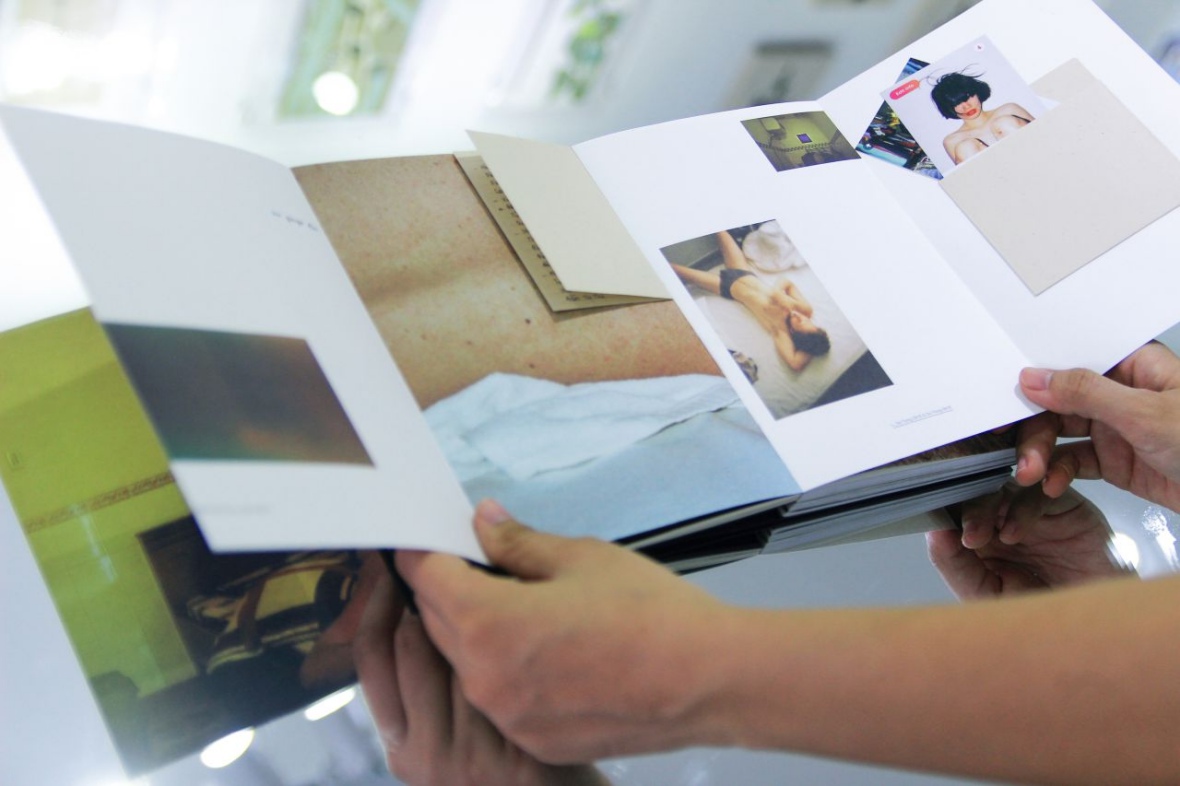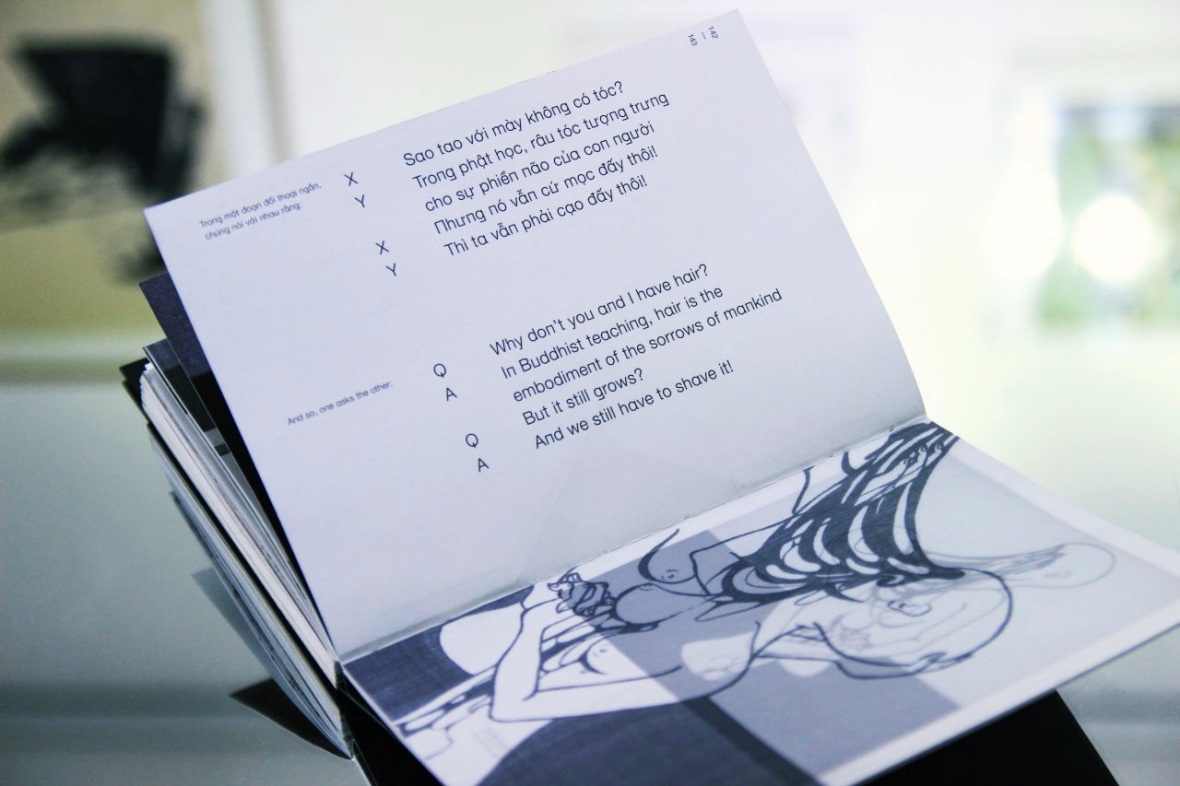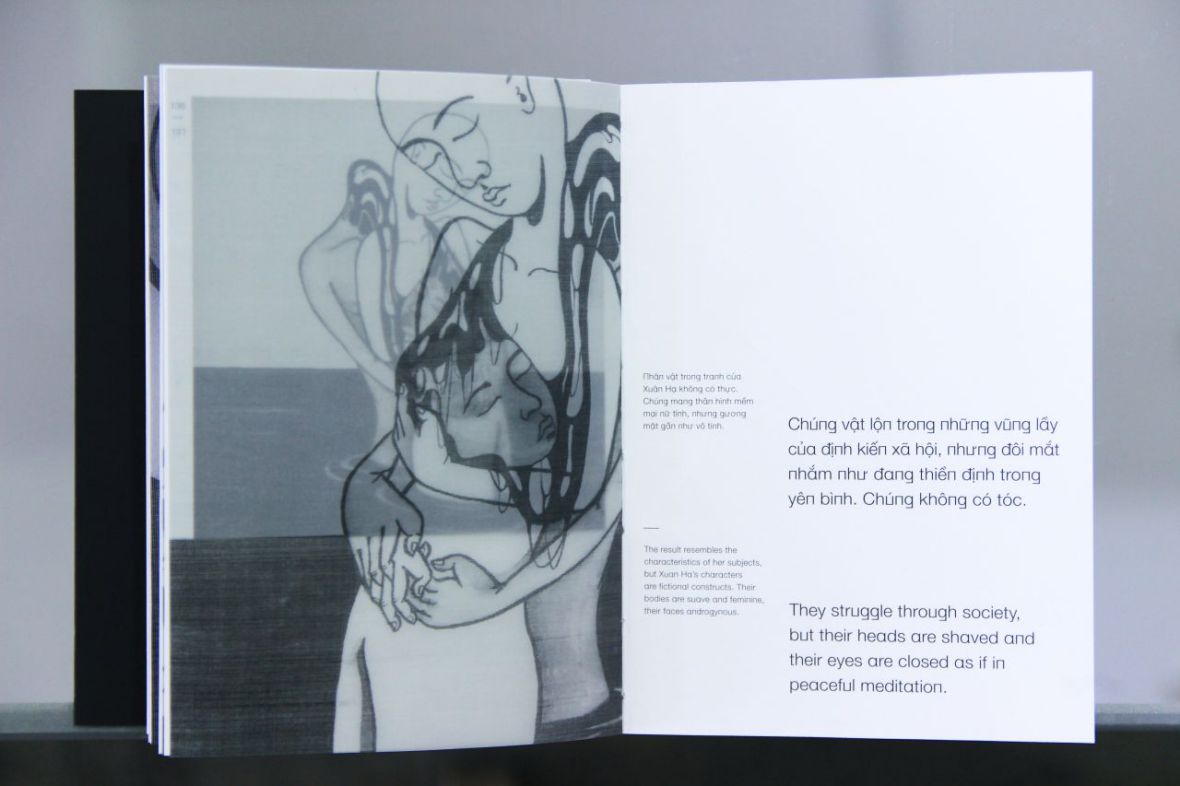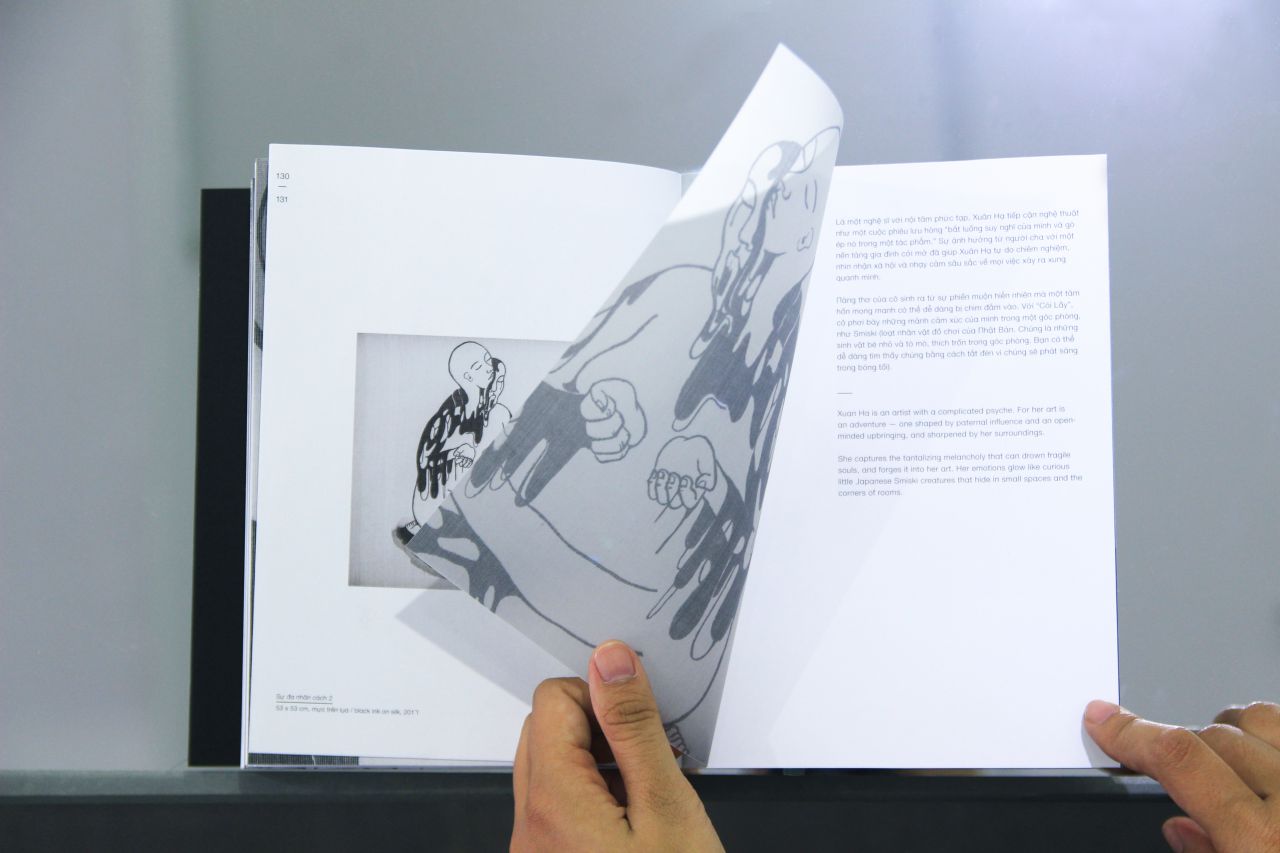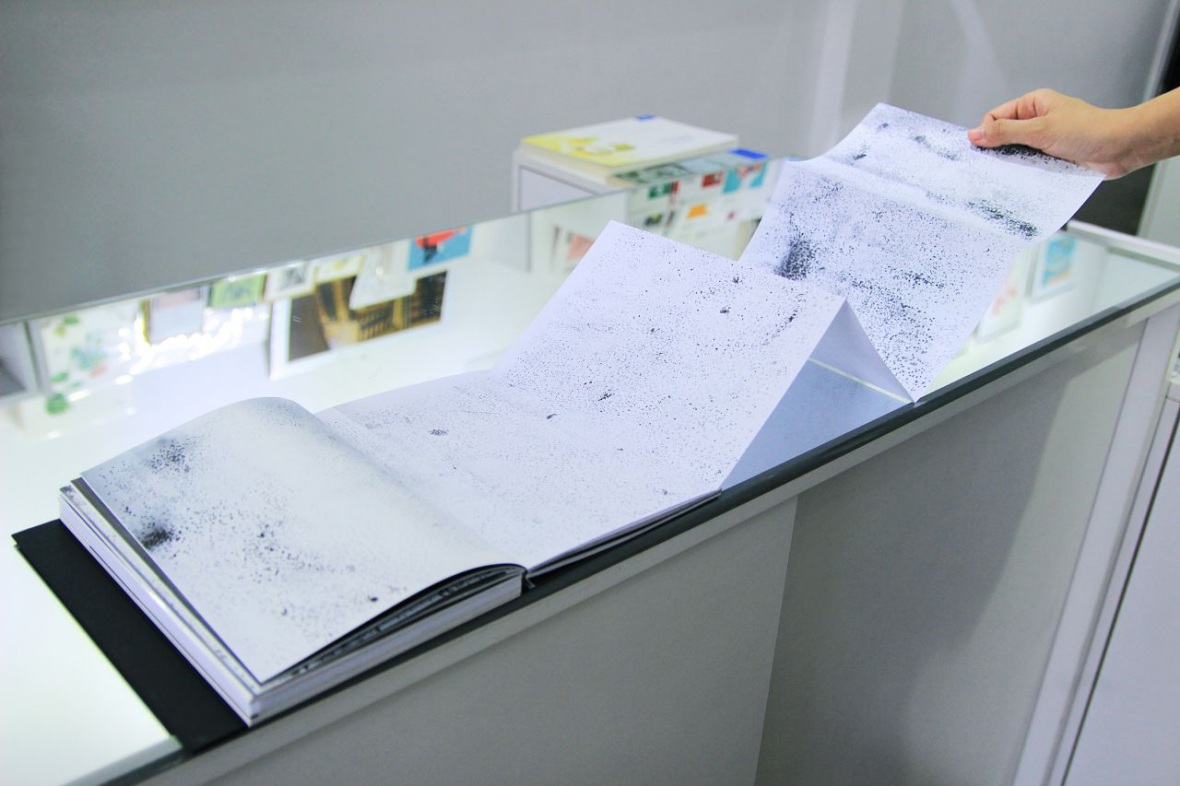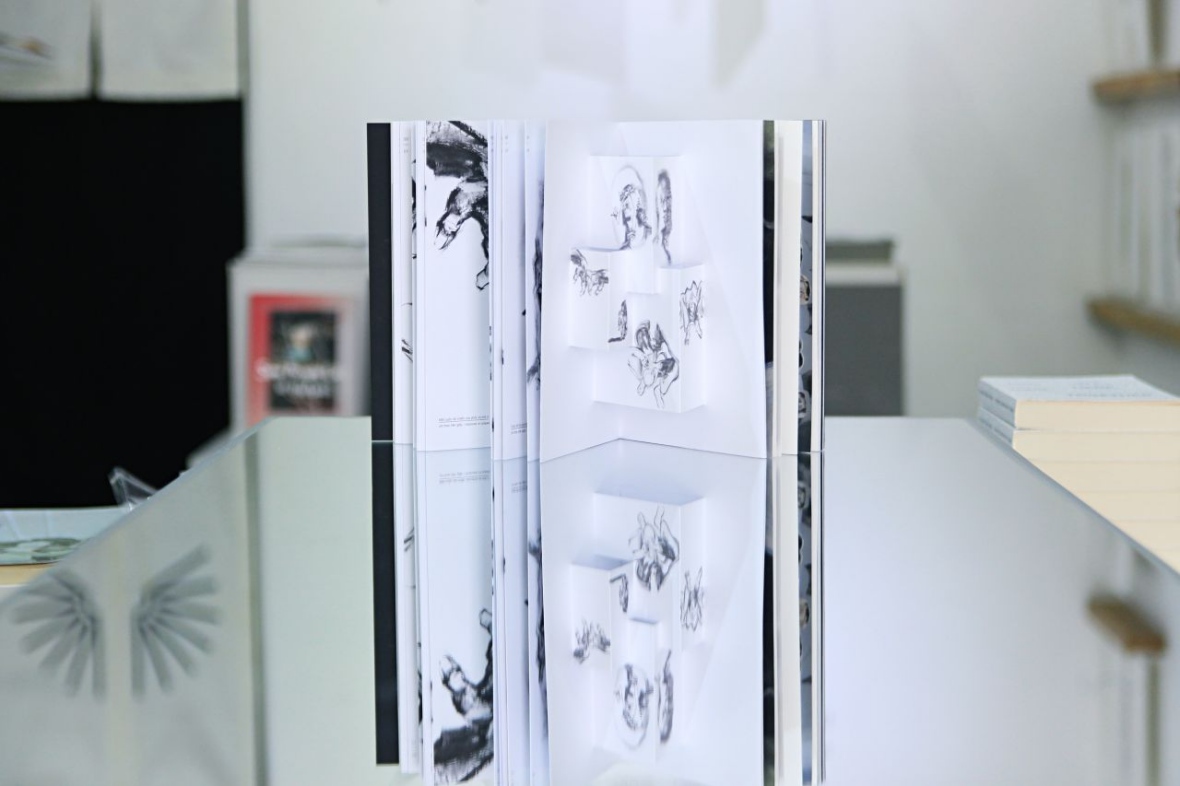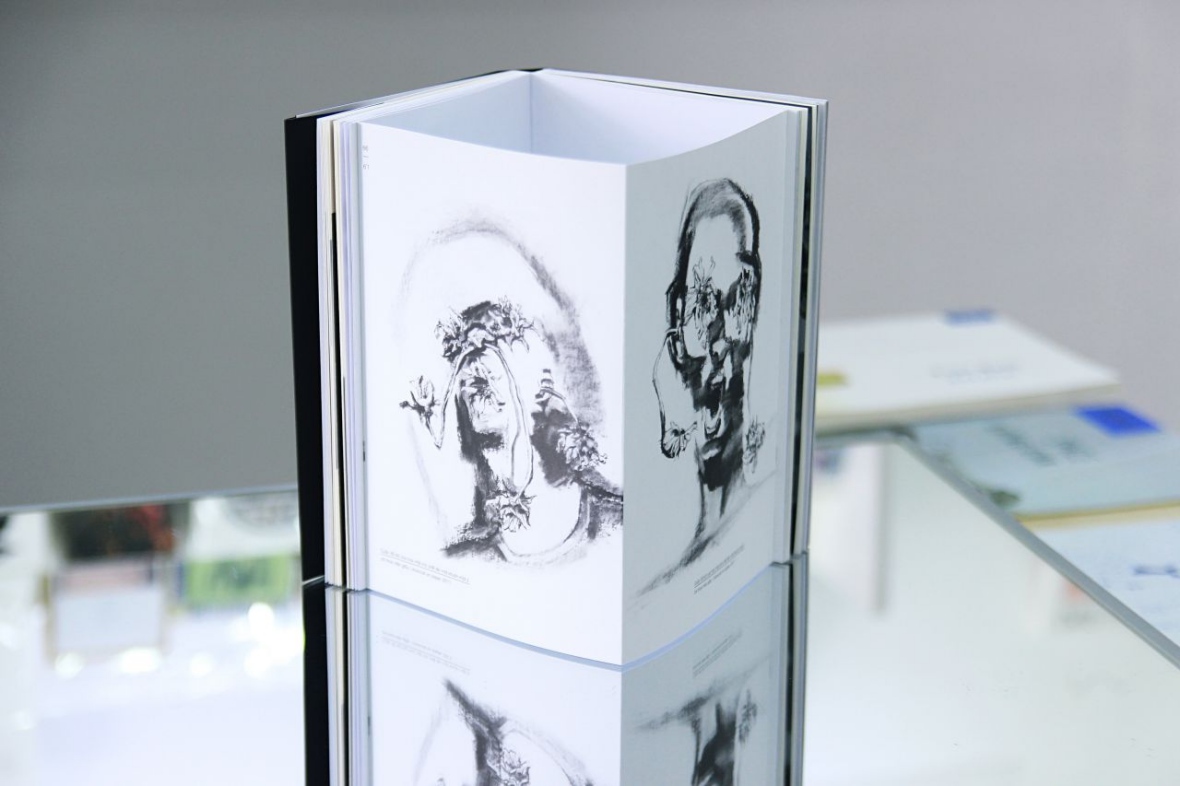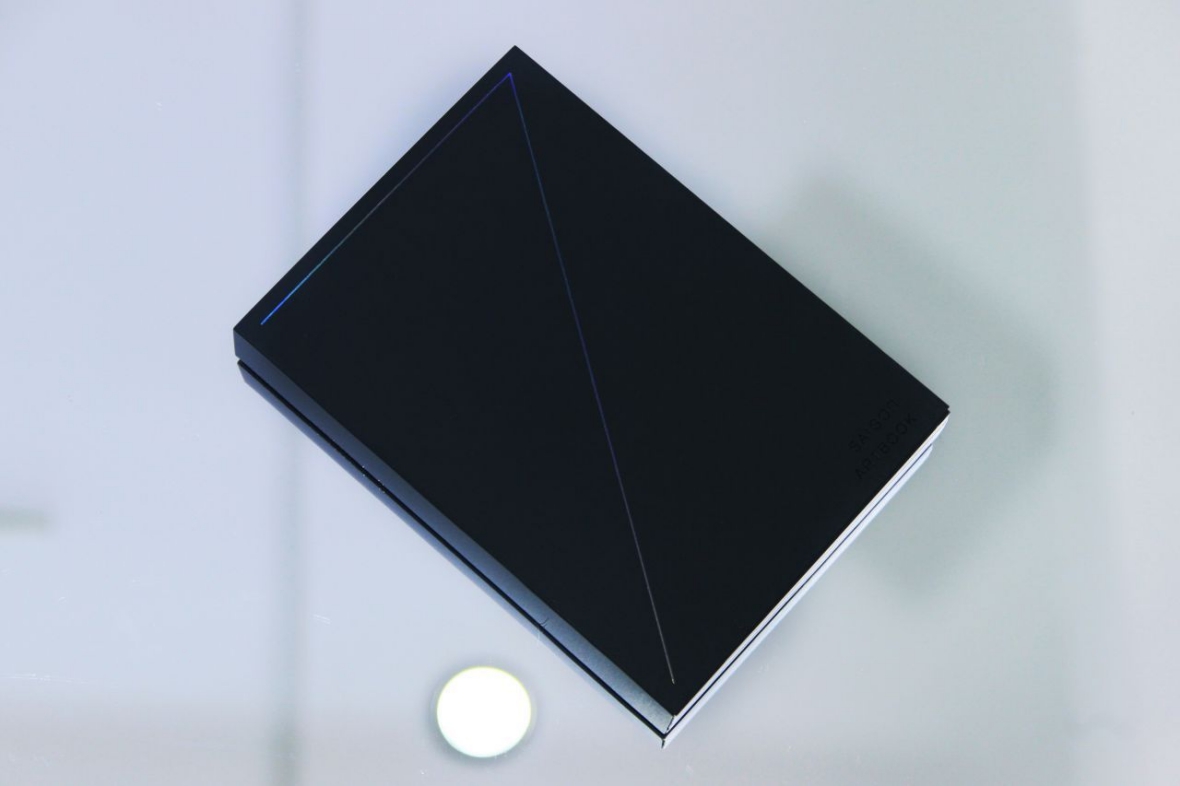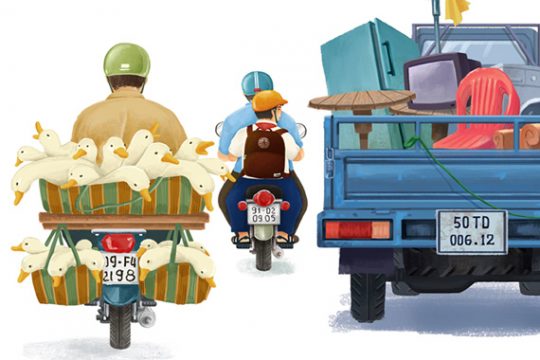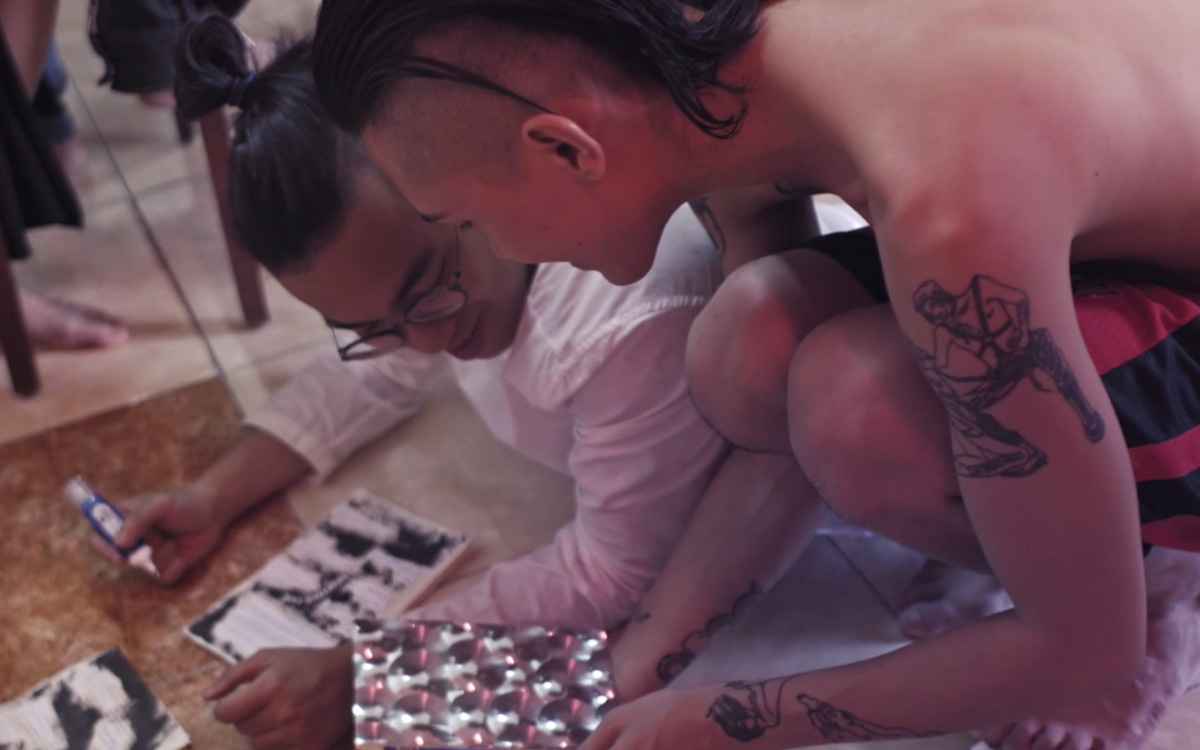
It started simple. Back in 2014, two Vietnamese-American artists, Aiden and Nu, came back to their hometown Saigon where they found the artistic and LGBTQ communities fragmented. Within but a few months of their summer holiday, Aiden, Nu, and Đăng Bùi (an old friend who became the third team member) attempted to connect with other underground queer artists with the purpose of collaborating on a zine. The result was a global publication that focused on literary and visual arts produced by LGBTQ Vietnamese creatives. Its quirky title, Vănguard, is a play on words that combines the Vietnamese word văn, which roughly translates into literature and culture, and the English word “vanguard,” which means the forefront of an action or movement. After four issues, Vănguard continues to shape the local and international queer Vietnamese art scene with its unconventional approach to the artistic process and to community organizing.
一切的开始很简单。2014 年,两名越南裔的美籍艺术家 Aiden 和 Nu 回到他们的家乡西贡,在那里,他们发现,当地的艺术和 LGBTQ 社群(男/女同性恋、双性恋、跨性别者构成的社群)就像一盘散沙。在暑假的几个月里,Aiden、Nu 和他们的老朋友 Dang(后来成为了第三位成员)四处联系其他地下同性艺术家,合作打造一本独立杂志(zine)。最终,他们成功推出一本专注越南 LGBTQ 创意者的文艺和视觉艺术杂志,并在全球范围内出版发行。
古怪的杂志名《Vănguard》其实是越南语“văn”(意为文学或文化)与英语的“vanguard”(前卫行动或运动)的结合。《Vănguard》至今已经改造了四期,并继续凭借其颠覆传统的艺术创作方式与社群组织,影响着越南乃至国际范围内的同性艺术界。
From Maika Elan’s The Pink Choice, a photo series that won the World Press Photo award in 2013 to the decriminalization of same-sex marriage in 2015, Vietnam is recognized as a pioneer within the LGBTQ rights movement in Southeast Asia. Yet, despite such hopeful progress in gained rights and visibility, it’s worth noting that the representation of this marginalized group in mainstream media is largely produced for the sake of driving awareness on LGBTQ issues to the general public, yet not directly advocating for social change or full acceptance. For the LGBTQ Vietnamese artists who seek an alternative space to explore their sexuality, to discover community, and to share their artwork, there lacked a platform free from judgment, external validation, and the boundaries of censorship. Seeking to fill in this gap, Vănguard quickly evolved from a personal venture into a community project that connects LGBTQ Vietnamese creatives across the globe and is now commonly regarded as a bastion where queer artistic expressions are rightly celebrated and concerns openly voiced.
从 2013 年越南摄影师 Maika Elan 的摄影系列《The Pink Choice》(《粉色选项》)获得了世界新闻摄影奖(World Press Photo award),再到越南 2015 年废除了同性婚姻禁令,这个国度一直被认为是东南亚 LGBTQ 权利运动中的先驱。然而,尽管在权利和社会能见度方面取得了令人鼓舞的进展,但这一边缘化群体在主流媒体中的代表性质,却主要是为了教育大众而产生的。对于寻求替代空间来探讨性取向、发现社区、分享作品的越南 LGBTQ 艺术家来说,还缺乏一个不带评判、无需受外界审视、能够避开审查制度的平台。
为了填补这一缺口,《Vănguard》迅速从原来的个人项目发展成为一个社区项目,连接起遍布全球的越南 LGBTQ 创意人才。如今,《Vănguard》被视为是一个同性艺术创作的堡垒,让他们得以自由表达,为各种问题发声。
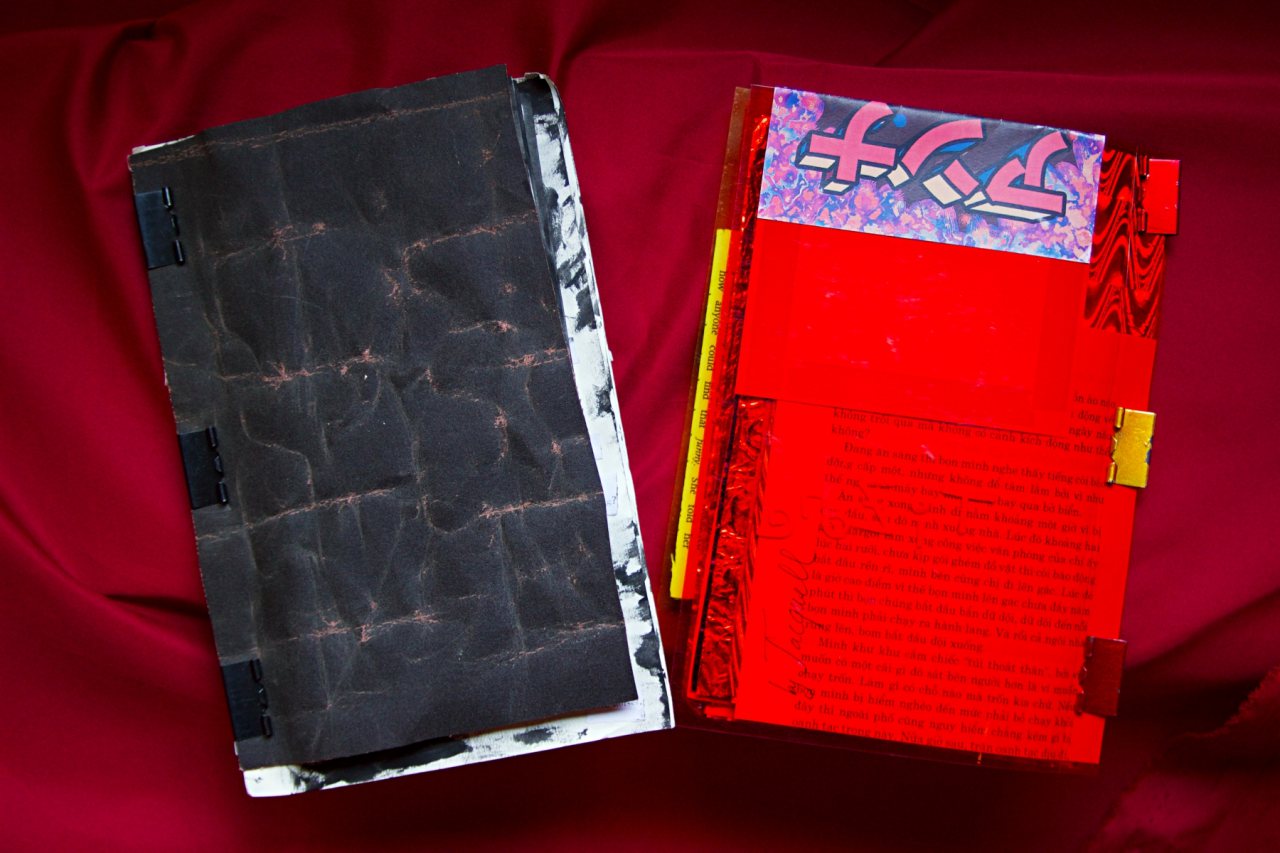
Their choice to use the zine as a medium boils down to its low production cost, which in turn makes Vănguard more accessible for everyone to obtain and participate its making. Its self-published and decidedly underground status allows artists to dodge the painstaking process of seeking approval either from the Vietnamese government, from the publishing house, or even from the audience. Since there are no rules, the potential is unfettered.
之所以选择独立杂志这种媒介形式,归结到底在于较低的制作成本。毕竟只有保证低成本才能让更多人有机会看到《Vănguard》,并参与一起创作。通过独立出版、保持地下模式的运作,艺术家无须费尽力气来获得从越南政府、出版社到读者的认可。没有了条条框框的限制,意味着他们可以自由发挥。
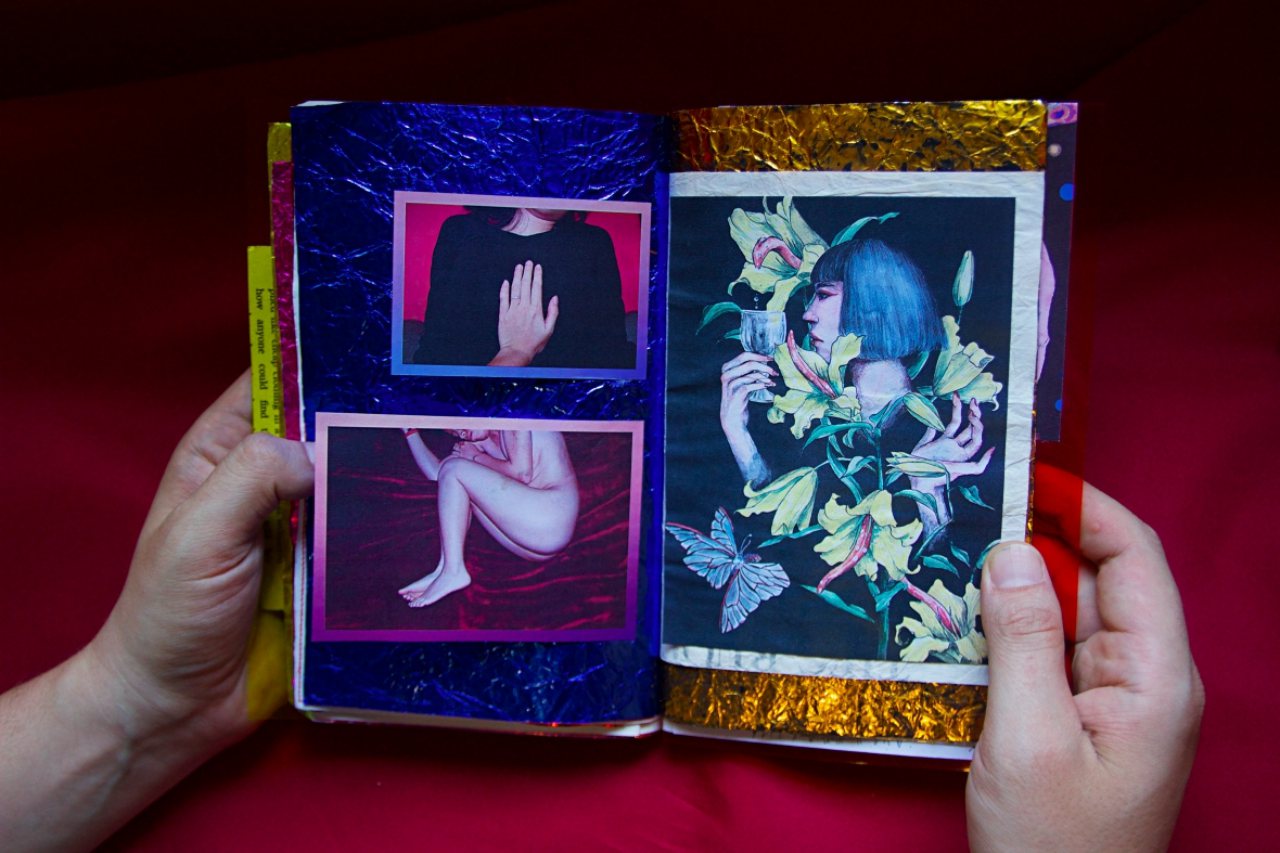
Artworks featured in Vănguard are selected through an open call, which reflects the breadth of issues and approaches pursued by queer artists with Vietnamese heritage. While the four issues revel in diversity both in form and content, what ties the works together is the commonality of subversion. Such transgression comes not only from the subject matter (identities, sex, politics, to name a few), but also from an in-your-face rebuttal to the mainstream media, which, for better or worse, has always rendered the LGBTQ community in a family-friendly light. Rejecting the sympathetic trope of victims suffering from societal rejections and doomed romance, artists featured in Vănguard reclaim what it means to be queer through whimsical wordplay, unabashed imagery, and disarming recollections of personal experiences.
《Vănguard》通过公开征集、筛选杂志中的艺术作品,致力展现越南艺术家的艺术创作与各种各样的话题。虽然目前出版的四期杂志在形式和内容上都充满多样性,但无一例外,都是极具颠覆性的。《Vănguard》的颠覆不仅在于其主题(身份、性别、政治等),还在于其对主流媒体的直面反驳,这也为 LGBTQ 社群提供了一种像家和朋友一样安全、友好的环境。《Vănguard》艺术家拒绝那种不被社会认同的受害者姿态或是悲剧式的浪漫主义,相反,他们以异想天开的文字游戏,不加掩饰的影象和令人放下心防的个人经历,来重新定义同性恋群体。
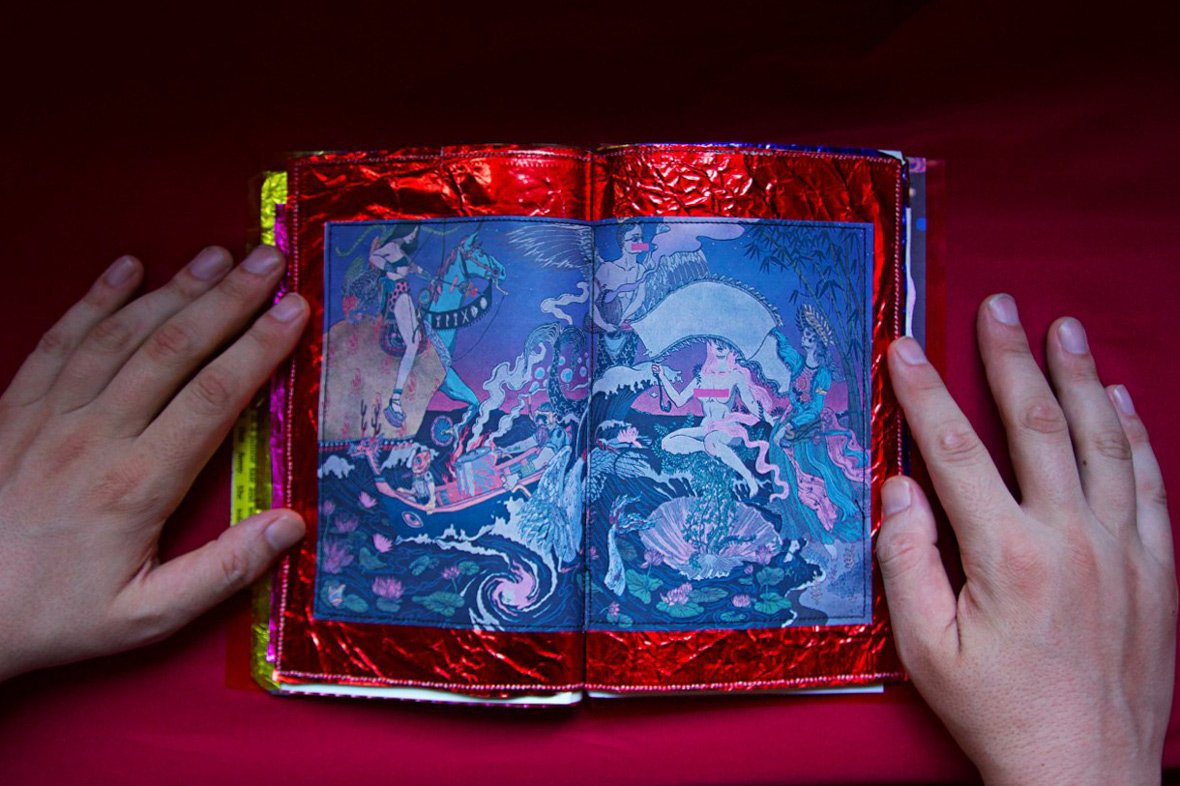
Catering to their international audience, Vănguard’s first three issues were designed digitally and published through both physical and online forms. In 2017 however, with the surge in local handmade zines and self-published art books throughout Vietnam, Vănguard’s fourth issue pursued a more innovative approach by paying tribute to the fundamental practice of zine making: manual assemblage. The latest issue is separated into two sections for writing and artworks. Still grounded in the signature cut and paste aesthetic of past issues, every individual page comes to life and transports the audience to a different space and time through the use of various techniques, materials, and textures. The zine is a piece of art in itself that retains the DIY spirit without compromising complexity. For the construction, “[we] used old books, common art supplies, sandpaper, votive paper, tin foil, chalk, duct tape, acrylic paint, thread, decal, binder clips, and much more,” shares Aiden, the creative director of Vănguard. He points out the zine’s chaotic visuals, bursting with colors and textures, are influenced by his own sporadic and spontaneous personality.
为了照顾到全球各地的读者,《Vănguard》前三期都是通过电脑设计,同时在线上和线下发布。然而,在 2017 年,随着越南国内手工制作独立杂志和自出版艺术书籍的流行,第四期的《Vănguard》采取了一种更具创意的制作方式——手工装订,同时也是向最传统的杂志制作工艺致敬。
最新一期的杂志分为写作和艺术作品两部分。延续往期杂志的标志性剪切粘贴式美学风格,每一页的设计焕发蓬勃能量,并通过使用各种工艺、材料和纹理带领读者穿越到不同的空间和时间。独立杂志本身就是一种艺术,既秉承了 DIY 的精神,又保证了设计的精致性。 《Vănguard》创意总监 Aiden 这样描述杂志的创意设计:“(我们)用的材料包括旧书、普通美术用品、砂纸、祈愿信纸、锡纸、粉笔、胶带、丙烯酸涂料、绳线、贴花纸、装订夹等等。”他解释,看似杂乱无章的视觉效果,充满丰富的色彩和纹理,都是受到了他自己随性与自发的个性影响。

Behind this labor of love is not just the central team and the contributing artists, but also a motley gang of community members who spent countless hours putting it all together. After a prototype for each submission has been designed, an open call for volunteer assemblers was initiated. In 2017, for the entire month of June, Aiden’s apartment became an assembly line of queers with art tools in one hand and a can of beer in the other. As they bonded through this artistic process, the volunteers, organizers, and artists not only formed an intimate relationship with the final product, but they also forged lasting friendships with each other. Vănguard‘s fourth issue is a proud product of communal collaboration, created for the community by the community.
这本承载着爱与努力的杂志,是由团队和投稿艺术家,以及一群团结一致的社群成员,一起花了无数个日夜才制作出来的。在设计好每份投稿之后,他们会公开征集志愿者进行装订。整个六月里,Aiden 的公寓成了同性恋者的“装配线”,他们一手拿着艺术工具,另一只手里则拿着一罐啤酒。在这种艺术创作过程中,志愿者、组织者和艺术家接近着彼此的距离,他们不仅与最终的成品杂志有了更亲密的联系,同时还在互相间建立了持久的友谊。所以说,第四期《Vănguard》是令人骄傲的社群合作成果,也是为了“骄傲”社群本身。

Originating from radical movements like punk rock and third-wave feminism, zine culture has always been about challenging the status quo. For Vănguard, the point is less about creating a masterpiece and more about bringing people together and encouraging every artist to keep pushing their creative boundaries. While not intentionally political, its very concept of being self-published, uncensored, and unpolished is rebellious to the core. The form of activism Vănguard pursues is through community building, and as the community grows, it becomes irrelevant to categorize their activism.
While physical copies of Vanguard Issue #4 were only made available to those who participated in the workshop in Vietnam, all four issues of the zine are available digitally to be read for free on their website. Click here to check it out.
独立杂志的文化,起源于朋克摇滚(punk rock)和第三波女权主义的兴起,一直以来主题都会涉及到对现状的挑战。就像对《Vănguard》来说,关键不在于创作一部杰作,而在于将人们团结在一起,并鼓励每一位艺术家不断开拓他们的创作空间和界限。虽然不是出于政治目的,但其独立出版、未经审查、未经修饰的概念本身就极具叛逆性的核心意义。《Vănguard》所追求的活动形式本身就是通过社区建设实现的,随着社区的发展,再将这样的活动分门别类,就显得无关紧要了。
虽然第四期《Vănguard》只有参加工作坊的人能有机会拿到实体杂志,但好消息是现在在他们的网站上,公开了一到四期的电子版本可供免费阅读。想了解更多,请点这里。

